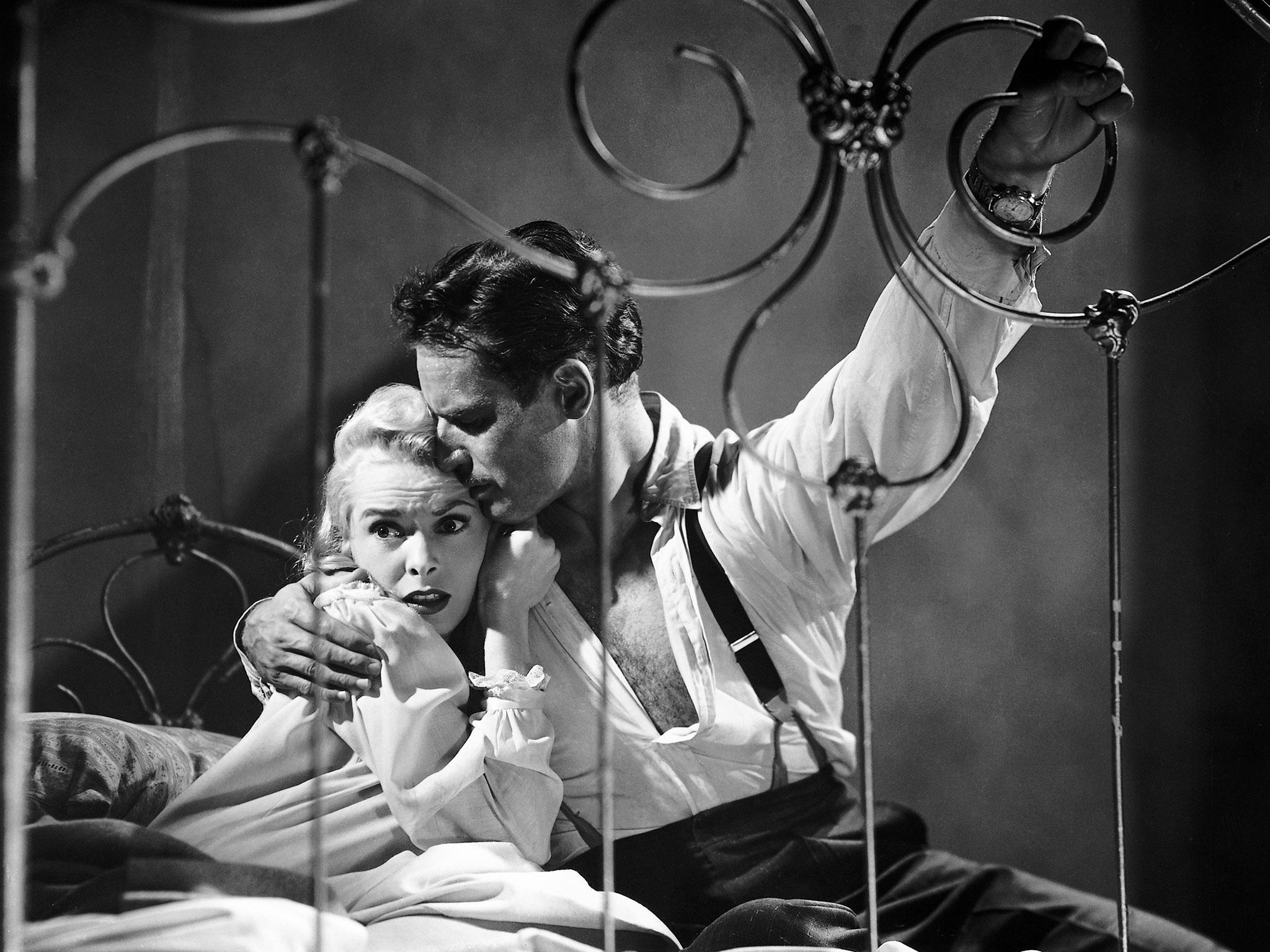As Perverse as a Nightmare
Touch of Evil (1958) became a great film because of a misunderstanding. Charlton Heston had agreed to appear in a police drama for Universal Pictures, but only because he thought Welles was signed to direct it. Welles, in fact, had agreed only to act in the film.
In a 1965 interview with the French magazine Cahiers du Cinéma, Welles explained:
Universal did not clear up his misunderstanding; they hung up and automatically telephoned me and asked me to direct it. . . I set only one condition: to write my own scenario! And I directed and wrote the film without getting a penny for it, since I was being paid as an actor.
Welles hated Universal’s scenario for the movie. He changed the locale from San Diego to the Mexican border. He also chose a supporting cast that Pauline Kael described as “assembled as perversely as in a nightmare.” It included Akim Tamiroff as a smalltime thug, Dennis Weaver as an outrageously inhibited motel clerk, Zsa Zsa Gabor as a strip club owner, and Marlene Dietrich as a madam. Heston plays an incorruptible Mexican narcotics agent, and Janet Leigh portrays his new bride. Welles turns in a towering performance as Hank Quinlan, a no-nonsense police captain whose hunches and leg twinges have helped put away hundreds of criminals.
Universal re-edited the film against Welles’ wishes before it was released in 1958. It received no previews and little fanfare. In 1998, Rick Schmidlin supervised a second re-edit of the film, following the suggestions from a 58-page memo Welles had prepared after learning he wouldn’t have the final cut. Schmidin restored much of the material that was originally cut out.
This newer version is the film that’s currently available on disc and shown occasionally on cable. It’s a big improvement over the theatrical release, both in the clarity of the storyline and the power of the imagery. Most famously, Welles had created a long, carefully timed tracking shot at the beginning of the film that ends with a dramatic surprise. Universal had cut the shot and placed the opening titles over what was left, greatly diminishing its effect. The latest edit restores this critical shot and places the credits at the conclusion of the story, as intended.
If any film can be referred to as baroque in its visual style, that film would be Touch of Evil. Even after more than 50 years, it continues to fascinate. Perhaps the most innovative film of the 1950s, it was decades ahead of its time. This is Welles’ third best film (after Citizen Kane and The Magnificent Ambersons) and the most daring of his Hollywood films.
Touch of Evil
(1958; directed by Orson Welles)
Universal Studios (Blu-ray and DVD)
Sunday, November 3 at 6:00 p.m. eastern on Turner Classic Movies
Reviews